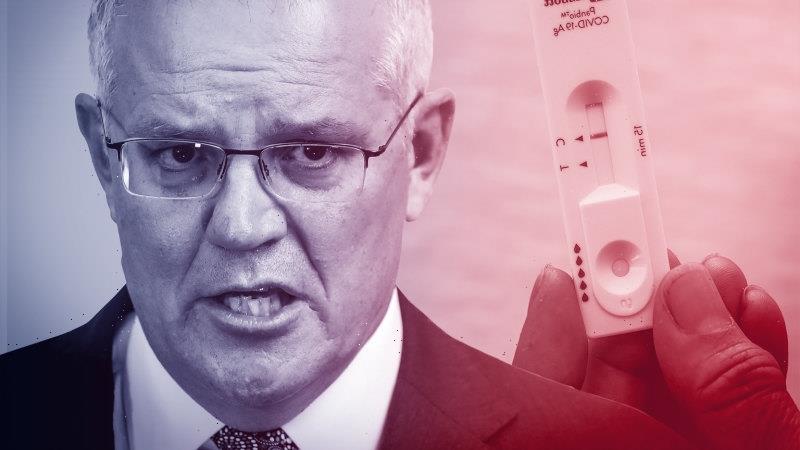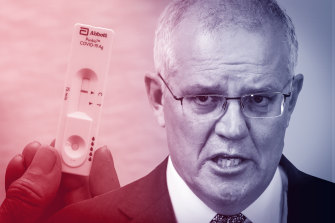Scott Morrison needed a summer of love. He got a summer of loathing instead.
The Prime Minister has taken a battering from voters over his handling of the pandemic during a time of heightened anxiety over the Omicron strain and real fury over the test kit shortage.
The nation goes into the third year of the pandemic with a clear line in the government’s fortunes.Credit:Justin McManus/Alex Ellinghausen
Voters used to say Morrison and the Coalition were listening to them and focused on the right issues. He led on this measure by 13 percentage points last May when case numbers were down and budget spending was up.
Now Anthony Albanese and Labor hold the upper hand on the same question. Their lead is only a single percentage point but is part of a shift against the government on all fronts.
Whatever the question, the government has lost ground. Who is best to lead the country? Morrison and the Coalition are ahead by three percentage points but they used to be ahead by nine. At their peak in May they led by 18 points.
Who is honest and trustworthy? Morrison led on this question from April to October but slipped badly in November and has now lost his lead. Albanese is ahead with a small margin, at just a single percentage point, but the trend has gone his way.
And it is the trend that counts. The nation goes into the third year of the pandemic with a clear line in the government’s fortunes. Morrison and the Coalition lost ground steadily last year when voters were asked about their management of key policies. On the economy, health, jobs and more, they never regained the heights they saw in May.
The January survey compounds the impression of a government sliding down a dusty hill while trying to dig its boots into the ground or grab hold of something to stop the descent.
Liberal and Nationals MPs were hoping Australians would emerge from the Christmas and New Year holiday feeling more comfortable about their fortunes and putting the government in a good position to contest the election.
But the summer of discontent has wrecked the dream of a snap poll in March and tightened the race for the election in May.
Because the Resolve Political Monitor gives respondents a way to make unprompted remarks, the frustration with Morrison echoes through the results.
“We’ve been under-prepared during this whole pandemic,” said one respondent. “He isn’t taking responsibility.”
“Too slow to react,” said another. “The RATs issue is just the latest one. We should be prepared for this.”
Voters are not convinced by Albanese, however. “He should be outlining his vision now in the lead-up to the election, but I hear nothing of him,” said one respondent.
“What has he made better during the last term?” asked another. “I cannot think of any positive impact.”
Some voters are warming to Albanese as a potential prime minister. He has been wary of picking fights on big policies like tax, but this caginess may be producing results. Asked to rate his performance, however, one quarter of all voters are undecided. If he wants to convince Australians he has a vision, he may need to paint it with more precision. And communicate it with more force.
No single survey can capture an entire electorate, so it is wise to be cautious about these new findings. The shifts against the government are greater than the margin of error, which was 2.5 percentage points. Even so, they only reflect a moment in time.
Political observers discovered at the last election that a poll showing one side was “in the lead” should be handled with care. This election race has not even formally begun. Morrison found a way to scramble up the hill three years ago and may do it again.
What stands out is the way the Morrison and the Coalition have lost standing among ordinary Australians on the basic test of managing the pandemic. The Omicron summer has led to new, harsher assessment of this leader and his government.
The Morning Edition newsletter is our guide to the day’s most important and interesting stories, analysis and insights. Sign up here.
Most Viewed in Politics
From our partners
Source: Read Full Article

